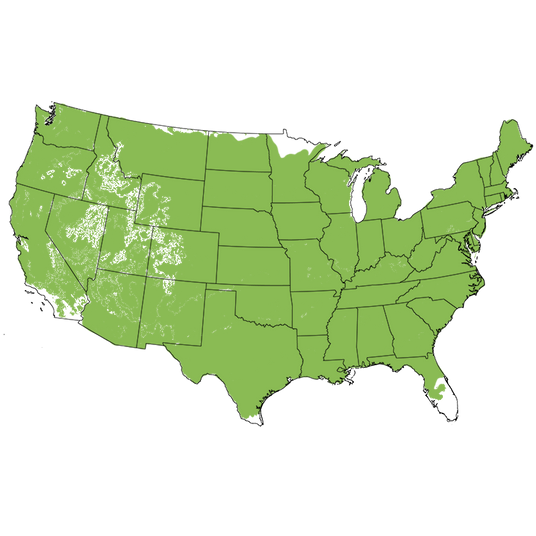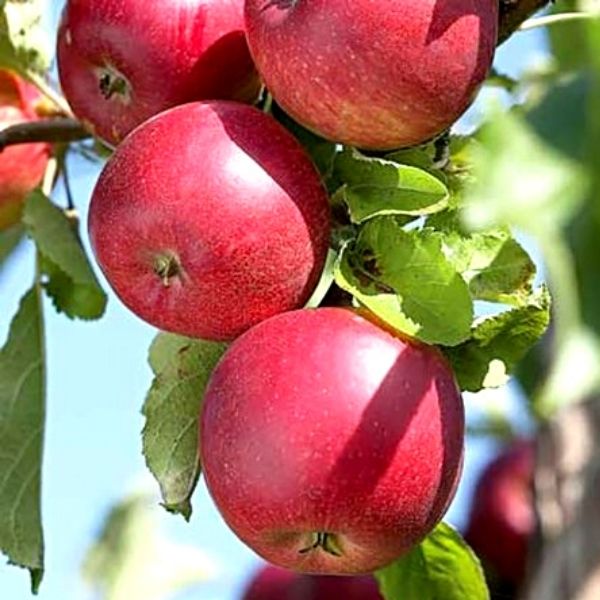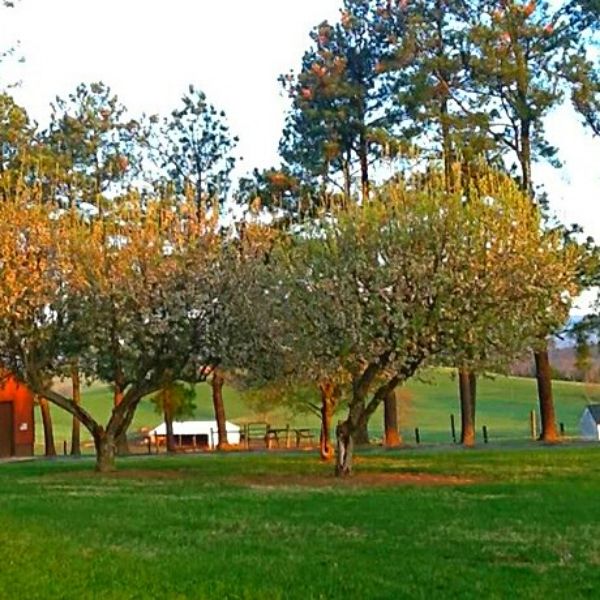Red Jonathan Apple Tree
Malus 'Red Jonathan'
- Stay Protected with Plant Sentry ™
Red Jonathan Apple Tree - #3 Container 4-5 Feet is backordered and will ship as soon as it is back in stock.
Plant Sentry™
Plant Sentry™

Plant Sentry™ Protected
Your order is protected by our compliance system that:
- Prevents restricted plants from shipping to your state
- Ensures plants meet your state's agricultural requirements
- Protects gardens from invasive pests and diseases
Delivery and Shipping
Delivery and Shipping
Delivery and Shipping
Fast, Safe Plant Delivery
Ships in 3-4 business days • Tracking provided • Weather protected
| Under $50 | $9.99 |
| $50 - $99.99 | $14.99 |
| $100 - $149.99 | $16.99 |
| $150 - $198.99 | $24.99 |
| $199+ | FREE |
✓ Zone-specific timing • ✓ Professional packaging • ✓ Health guarantee
Understanding Plant Options
Nature Hills offers plants in two main formats:
- Container Plants: Grown in pots with soil, sized by container volume and plant age
- Bare Root Plants: Dormant plants without soil, sized by height measurements
Container Plant Sizes
Container sizes indicate plant age and growing capacity rather than liquid volume equivalents. Our containers follow industry-standard nursery "trade gallon" specifications, which differ from standard liquid gallon measurements.
Young Plants (6 months to 18 months old)
| Container Size | Actual Volume | Metric Equivalent |
|---|---|---|
| 2" x 2" x 3" | 0.18 - 0.21 dry quarts | 0.20 - 0.23 dry liters |
| 4" Container | 0.31 - 0.87 dry quarts | 0.35 - 0.96 dry liters |
| 4.5" Container | 0.65 dry quarts | 0.72 dry liters |
| 6" Container | 1.4 dry quarts | 1.59 dry liters |
| 1 Quart | 1 dry quart | 1.1 dry liters |
| 5.5" Container | 1.89 dry quarts | 2.08 dry liters |
Established Plants (18 months to 2.5 years old)
| Container Size | Actual Volume | Metric Equivalent |
|---|---|---|
| 2 Quart | 2 dry quarts | 2.2 dry liters |
| #1 Container | 2.26 - 3.73 dry quarts | 2.49 - 4.11 dry liters |
| 5" x 5" x 12" | 3.5 - 4.3 dry quarts | 3.85 - 4.74 dry liters |
Mature Plants (2-4 years old)
| Container Size | Actual Volume | Metric Equivalent |
|---|---|---|
| #2 Container | 1.19 - 1.76 dry gallons | 5.24 - 7.75 dry liters |
| #3 Container | 2.15 - 2.76 dry gallons | 8.14 - 12.16 dry liters |
Large Plants (3-5 years old)
| Container Size | Actual Volume | Metric Equivalent |
|---|---|---|
| #5 Container | 2.92 - 4.62 dry gallons | 12.86 - 20.35 dry liters |
| #6 Container | 5.25 - 6.01 dry gallons | 23.12 - 26.42 dry liters |
| #7 Container | 5.98 - 6.53 dry gallons | 26.34 - 28.76 dry liters |
Bare Root Plants
Bare root plants are sold by height from the root system to the top of the plant. Plants may exceed minimum height requirements.
Common Sizes:
- Trees: 1 foot, 2 feet, 3 feet, 4 feet, 5 feet, 6 feet
- Shrubs & Perennials: 1 foot, 18 inches, 2 feet
Important Notes
Container Volume Specifications
- Trade Gallon Standard: Our containers follow industry-standard "trade gallon" specifications established by the American National Standards Institute (ANSI Z60.1) for nursery stock
- Volume Variations: Actual soil volume may vary due to plant root systems and growing medium settlement
- Age Indicators: Container size primarily indicates plant age and maturity rather than liquid volume equivalents
Growing Conditions
- Plant size can vary based on variety and growing conditions
- Container size helps indicate plant maturity and establishment level
- Larger containers generally mean more established root systems and faster landscape establishment
Seasonal Availability
- Bare root plants are available seasonally when dormant
- Container plants are available throughout the growing season
- Specific varieties may have limited availability in certain sizes
Questions?
For questions about specific plant sizes or availability, please contact our plant experts who can help you choose the right size for your landscape needs.
Plant Highlights
Red Jonathan Apple Tree highlights at a glance!
-
Botanical Name
-
Brand
-
Growing Zones4, 5, 6, 7, 8, 9
-
Growth RateModerate
-
Mature Height
-
Mature Width
-
Leaf Color
-
Flower Color
-
Fall Color
-
Pollinator FriendlyYes
-
Pollinator Required
-
Bloom PeriodLate Spring
Characteristics
Where To Plant
When To Prune
- Late Winter
Water & Moisture Needs
- Moderate
Sunlight Needs
Soil Needs
- Widely Adaptable

Growing Zones
One of Our Most Popular - Red Jonathan Apple Tree!
- Mid-Sized Bright Red Apples!
- Juicy White Flesh
- Balanced Zingy & Sweet Flavor!
- Light Pink Buds Open to White Flowers
- Fragrant - Pollinators Adore the Blooms
- Smaller Sized Tree
- Delicious, Prolific Harvest
- Mid-Season September-October Harvest
- Ornamental Features
- Self Fertile in Warmer Climates - Otherwise Requires a Pollinator
- Antique Variety!
- Long Storage Life
- Fresh Eating, Freezing, Cooking & Pie Apples
- 700-800 Chill Hours
Jonathan Apple (Malus 'Red Jonathan') is a deciduous fruit tree producing one of the most sought-after heritage apples! Also known as the Red Jonathan, you can plant several of these space-saving beauties in a side yard for your own garden-sized orchard of healthy fruit today!
Sometime during the 18th century, the Jonathan quickly became one of the most popular American apples to grow. This was both for its adaptability and flavor, not to mention its popularity for years in apple hybridization.
Jonathan is a parent of many popular apple varieties that you may have heard of! Apples such as Jonagold, Jonamac, Idared, Melrose and Akane, just to name a few.
Jonathan Apple Tree produces medium-sized, beautiful, bright red apples that are juicy and sweet with a slight zing to the flavor. They're tasty eat fresh right off the tree and great for pies, cider and other culinary delights. The apples even store well so you can easily enjoy them long after they're picked.
The Jonathan fruit ripens in mid-season, depending on where you are located, often between mid-September to October. Planting Jonathan with early or late-ripening varieties can extend your harvest.
Imagine picking an apple right from your own tree, still hot from the sun's rays and exposed only to the fertilizers or sprays that you chose to provide it with. There's simply no healthier or fresher way to provide delicious fruit for your kitchen table.
How to Use Red Jonathan Apple Tree In The Landscape
One of the many great things about apple trees is that they're not only easy to grow and produce delicious fruit, but they're also quite decorative... and Jonathan is no exception. Each year, as the apples grow, you'll love the ornaments hanging from a tree.
Nothing can quite compare with the sight of an apple tree in your own backyard, laden with round, red apples amid the vibrant green foliage. It's a uniquely beautiful sight!
Oval and sometimes spreading shape, try your hand at pruning these to any size you need, or even turn your tree into a conversation piece with Espalier pruning and training!
Picnic beneath the spring blooms and watch the pollinators swarm, or line your property with this beautiful ornamental tree for lush privacy.
Great size for small yards, front yard and edible landscaping, or as a beautiful specimen tree!
Home orchards, large and small, these trees fit perfectly into any setting and look great for the entire growing season!
Shade your gardens, patios and seating areas with this modestly proportioned tree, or be sure to place it outside a window so you can view the blooms and watch your harvests progress!
#ProPlantTips For Care
Apple trees require full sun, at least 6 hours of direct sunlight per day for best fruiting and yield. Look for full sun locations that favor the early morning sun. This is the drying sun and helps to cut down on moisture-related diseases. Hardy in USDA growing zones 4-9, these are widely adaptable.
Plant in a location with good drainage and average fertility. Apples will tolerate wet soil as long as it drains fast.
Good air circulation is important so keep trees canopy open with pruning to improve airflow within the canopy will also help avoid diseases.
Prune to control the overall height of the tree. It is recommended to keep all fruit trees below 10 feet tall for ease of maintenance and harvest. Summer pruning is the best way to control height and spread.
The Jonathan Apple Tree is a vigorous tree and suitable for almost all of the climate zones in the United States. Jonathan is self-fruitful in milder climates like California. However, it would benefit from pollination from varieties such as Granny Smith, Golden Delicious, Red Delicious, Dolgo, Empire, or McIntosh in all climates.
An investment in a Jonathan Apple Tree today is a way to cultivate beauty, health and a delicious harvest for years to come. Order Red Jonathan Apple Tree today here at NatureHills.com!
Red Jonathan Apple Tree Frequently Asked Questions
When to Plant Red Jonathan Apple Trees
Planting Bareroot trees as soon as you can dig a hole in spring and until hot weather, the earlier the better. Plant container Apple trees throughout the growing season with complete success - that is the benefit of container plants - to extend the planting season. Your County Agricultural Extension Office is a great resource for first and last frost dates in your area.
How to Plant Red Jonathan Apple Trees
Dig a large hole only as deep as needed to accommodate the bareroot or container root ball, and twice as wide. Add Nature Hills Root Booster to speed root establishment. Remove the pot or bag and situate it into the hole so the top of the soil (soil line if bareroot), is level with the new location's soil being careful not to plant too deep. Water in again very well and backfill with the same soil you dug up, tamping down gently to ensure there are no air pockets.
Top off with a 3-4 inch thick layer of Arborist mulch. Consider staking your tree to keep its trunk growing straight for the first year to ensure it stands tall against strong winds and drifting snow.
When to Prune Red Jonathan Apple Trees
Trim off any broken branches from delivery as soon as you take them out of the box. Prune and trim apple trees while dormant, in late winter or early spring, before you see new growth.
How to Prune Red Jonathan Apple Trees
Dormant prune to:
- Remove any double leaders or narrow crotch angles
- Eliminate any crossing branches
- Thin interior branching and leave the fruiting spurs and strong branches in place opening up the canopy
- Branching at least 24-36 inches above the ground
Prune Apple trees in the summer to:
- Control size and shape by reducing the length of longer new growth on vigorous trees
- Remove water sprouts on the main trunk or older branches in the crown
- Remove suckers at the base of the trunk
- Thin fruit during heavy years on established trees
How to Care for Red Jonathan Apple Trees
Growing an apple tree is easy when proper soil, good drainage, attention to moisture, and regular fertility are maintained. Once you've chosen an apple tree that works for your climate, in the size you need for your landscape, and its pollinator (if needed), then you've accomplished half the battle!
- Apple trees do best in full sun and well-drained soil
- Water your apple trees when it gets dry - especially during the fruit production stage, and drought periods to keep it stress-free
- Use arborists' wood chips to mulch over the roots of your apples and have your soil tested to see what your soil may be lacking before adding fertilizers
- Maintenance pruning and shaping
Apple trees will tolerate a wide range of soils, so long as water and nutrients are not limited and the pH level is adequate.
How to Fertilize Red Jonathan Apple Trees
For the first year, water alone is most important. It is always best to get a soil test to see what your soil is lacking before adding more fertilizers. Once established, a fertilizer routine may be beneficial. We do offer some excellent slow-release organic options, applied according to the package directions.
Fruit trees need more phosphate and it's possible to apply too much nitrogen which affects the soil's pH. Test soil acidity or alkalinity using a pH Tester.
Fertilize in spring when you first see new growth emerging.
- Don't overdo it
- Phosphates are your friends
- Pay attention to pH in areas with extremely high or low soil pH
- Follow the directions
Red Jonathan Apple Tree Pollinating Info
Red Jonathan is self-fruiting and doesn't need a pollinating partner, but will bear more fruit when paired with these varieties:
- Dolgo Crabapple Tree
- McIntosh Apple Tree
- Granny Smith Apple Tree
- Golden Delicious Apple Tree
- Red Delicious Apple Tree
- Empire Apple Tree
- Yellow Transparent Apple Trees
Harvest Times for Red Jonathan Apple Trees
Red Jonathan’s are typically ready to harvest in September.
Early-Season? Mid-Season? Late-Season? The terminology can be confusing for new apple tree growers. Weather, climate and your tree determine when it's ripe.
For Apples:
- Early-season is usually June-July
- Mid-season can be August-September
- Late-season can be from late September-November
The growing season consists of spring, summer, and fall, and varies with climate and weather. Areas with longer growing seasons in the warmer hardiness zones can greatly affect the harvest times for each particular apple variety grown in your area.










